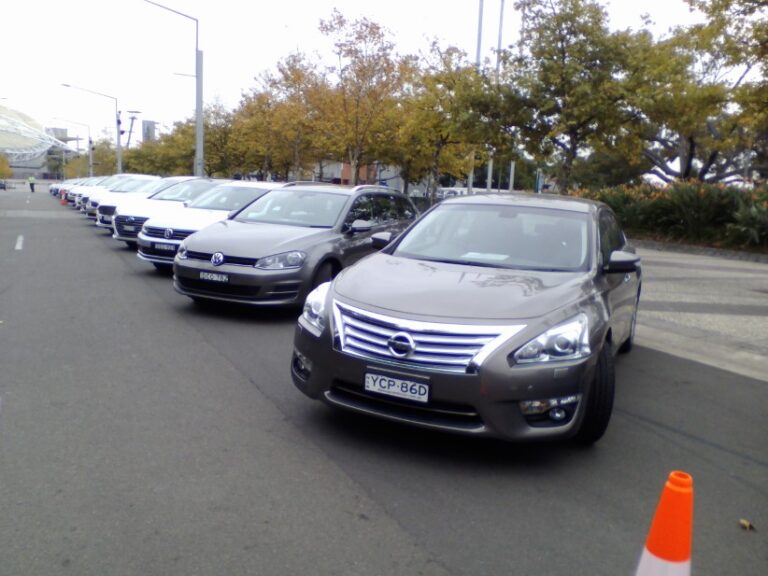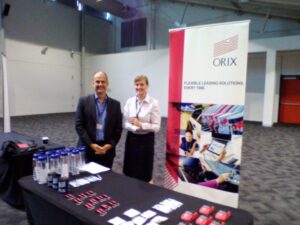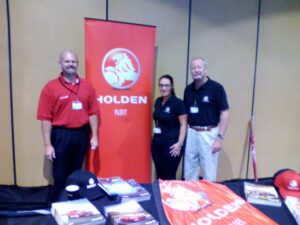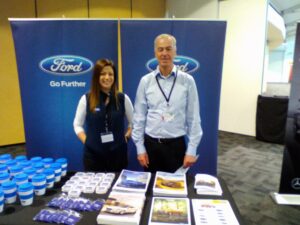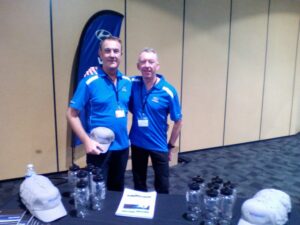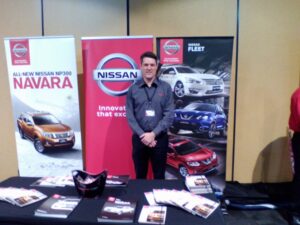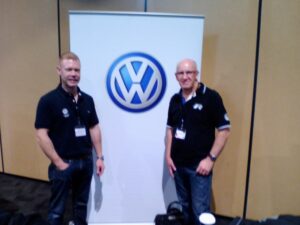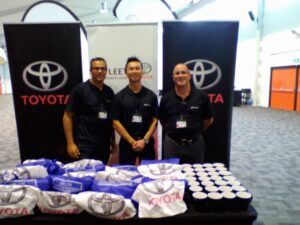– By Marc Sibbald –
In the fleet industry there is a lot of talk about best practice but too often it gets put aside for the most economically acceptable compromise. So when Fleet Auto News was invited to the IAG Tool of Trade Motor Vehicle Evaluation Day we jumped at the chance to be involved in this fantastic initiative.
When I arrived at Sydney Olympic Park for the event I was blown away by the number of vehicles that were assembled for evaluation by IAG employees from around the country. There were 59 vehicles from nine manufacturers parked down Grand Parade next to the showground.
There were also 87 IAG staff there to act as test drivers. The sight was a testament of the commitment to the process of selecting the right vehicles for the business.
And this event was only the third step (Business Suitability) in the extensive evaluation process that started with researching the available vehicles in each category and then eliminating vehicles that didn’t have the minimum level of safety or equipment.
Step four is when all the driver feedback from the evaluation day is collated and the vehicles are short listed for final analysis. A whole of life cost value will be applied to the short list of vehicles for final consideration before a submission is presented to senior management for approval.
Robert McDonald from the IAG Research Centre shared some tips during the opening presentation about adjusting your expectations when jumping in and out of different vehicles. As someone that has had the opportunity to drive a lot of different vehicles I learnt a lot from this session, especially the multitude of handbrake options.
When they started the evaluation participants were asked to complete before and after surveys of each vehicle and follow the same drive route around Sydney Olympic Park.
I went on several trips as a passenger to talk to the drivers and find out what they were looking for in a vehicle.
A common theme was more ground clearance. This made sense with the first person I did the circuit with because they operated in northern NSW and often visited customers on farms. But it came up again with the next couple of people who operated in metro areas. It appears carpark entrances and private driveways are becoming harder to navigate.
The medium SUVs and dual cabs utes were popular. People liked the ground clearance on the SUVs and the towing capacity of the utes. When I questioned the need to tow as part of their role, all freely admitted that it would be for personal use.
A big test of build quality was the door test. Everyone I spoke with said the sound the door made when they closed it influenced their perception of quality. And the country sales people that regularly drove on corrugated roads said it holds true after 100,000 kilometres.
“You notice the difference once the car gets to this age if the quality is poor” said one participant. “The knobs start to come loose and the dash will start to rattle. You get a lot of creaks and parts start falling off”.
The comfort of the driver’s seat appeared to be the deciding factor of a vehicle’s suitability. If first impressions were good it lead to a good review. They liked a seat with good adjustment and a lumbar adjustment. If it felt bad when they sat down it tainted the whole drive.
Every driver I spoke to thought the evaluation day was a great idea. They appreciated the opportunity to provide input (most had a list of request from their colleagues). And since most travelled more than 50,000 kilometres each year they were the right people for the job.
The evaluation process in detail
Step 1 – Research vehicles in the following categories;
- Small, Medium (Sdn/Wgn), Large (Sdn/Wgn), Medium SUV, Large SUV, Ute (D/Cab) 2WD
Step 2 – All vehicles short must have the following;
- 5 Star ANCAP rated including head restraint
- Dynamic brake assist
- Reverse camera and or sensors (Camera preferred)
- Blue tooth technology (Voice activation preferred)
- Daylight running lights, (DRL’s)
- Sat Nav or Smartphone App connectivity
- Bumper engagement, (Front & Rear) RCAR bumper test (Determined by IAG’s research centre)
- Cruise Control
- Automatic
- Mudflaps (Reduce the risk of rear end accidents)
- Colours that fit within IAG’s safe colour policy range (Determined by IAG’s research centre)
- Robust Service & Parts infrastructure Nationally
Step 3 – Business suitability
Tool of trade evaluation drive day where drivers representing all driving community environments from around Australia test vehicles and provide feedback on;
- Business fit for purpose
- Visibility
- Handling
- Performance
- Braking
- Ergonomics
- Cargo space
- Style
Step 4 – Vehicles shortlisted from driver feedback
Step 5 – Whole of life cost analysis
Step 6 – Negotiate vehicle purchase pricing
Step 7 – Senior management to make final decision on tool of trade vehicle range


